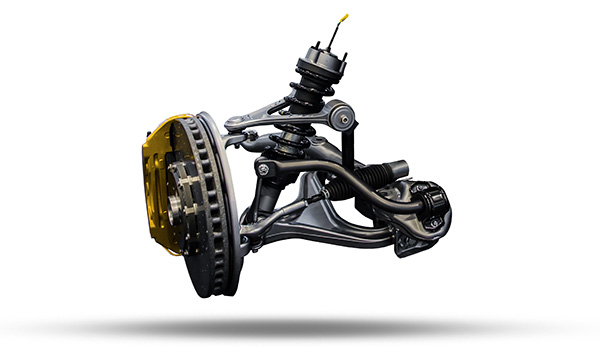
Are you aware that your car's suspension system is silently working beneath you, absorbing shocks and bumps to ensure a smooth ride? Yet, even the most reliable suspension can develop issues over time, potentially leading to major problems if left unchecked.
Stay tuned to discover how you can become more attuned to your vehicle's needs and ensure a safer, smoother journey ahead.
What is a Suspension System?
Before we dive into spotting potential problems, let's first grasp the fundamentals. Your car's suspension system is a complex network of components designed to support the vehicle's weight, absorb shocks from the road, and maintain stability during cornering and braking. Key elements include springs, shock absorbers (or struts), control arms, and various linkage parts.
Spotting Signs of Trouble
Uneven Tire Wear
Have you noticed uneven wear patterns on your tires? This could be a telltale sign of suspension problems. Excessive wear on your tires' inside or outside edges suggests misalignment or worn-out suspension components.
Bumpy Ride
Is your once-smooth ride now feeling more like a rollercoaster? A rough or bouncy ride often indicates issues with your shock absorbers or struts. If your car dips, sways, or leans excessively during turns or stops, it's time to investigate further.
Strange Noises
Pay attention to any unusual sounds emanating from your vehicle while driving over bumps or rough terrain. Squeaks, clunks, or rattles could signify worn-out bushings, loose joints, or damaged suspension parts.
Visible Damage
Conduct visual inspections of your suspension components regularly. Look for signs of leakage around shock absorbers or struts, cracks or bends in control arms, and damaged or broken springs. Any visible damage should be addressed promptly to prevent further deterioration.
Uneven Vehicle Height
Park your car on a level surface and observe its stance. If one corner appears lower than the others or if the entire vehicle sits unevenly, it could indicate worn-out springs or suspension sag.
Tips for Preserving Your Suspension System
Regular Inspections
Schedule routine inspections with a qualified mechanic to assess your suspension system's condition. Catching minor issues early can prevent them from escalating into costly repairs.
Wheel Alignment
Invest in regular wheel alignments to ensure proper tire contact with the road surface and prevent premature tire wear. Proper alignment also reduces stress on suspension components.
Replace Worn Components
Don't wait for suspension parts to fail before replacing them. If your mechanic recommends replacing worn-out shocks, struts, or bushings, follow their advice promptly to maintain optimal performance and safety.
Drive with Care
Avoid rough driving habits that put unnecessary strain on your suspension system. Slow down when driving over potholes, speed bumps, and rough roads, and avoid aggressive maneuvers that can stress suspension components.
Answering Common Questions
How frequently should I inspect my suspension system for potential issues?
Inspecting your suspension system at least once every six months to a year, or whenever you notice any abnormal behavior such as uneven tire wear or a rough ride is advisable.
Is it safe to continue driving with worn suspension components?
Driving with worn suspension components can compromise your vehicle's stability and handling, increasing the risk of accidents or further damage.
Can I visually inspect my suspension system at home?
While basic visual inspections are possible for car owners, it's recommended to have a professional mechanic perform a thorough inspection to ensure all potential issues are identified accurately.
What are the consequences of ignoring suspension issues?
Ignoring suspension issues can accelerate wear and tear on other components, increase the risk of accidents, and decrease overall driving comfort.
Are there any warning signs that indicate immediate attention is needed for suspension problems?
Yes, signs such as excessive bouncing, loud clunking noises, or noticeable fluid leaks from shock absorbers or struts indicate the need for immediate attention.
Suspension maintenance and repairs at Tri Star Automotive! We work on a wide range of vehicles, so don't hesitate to call!